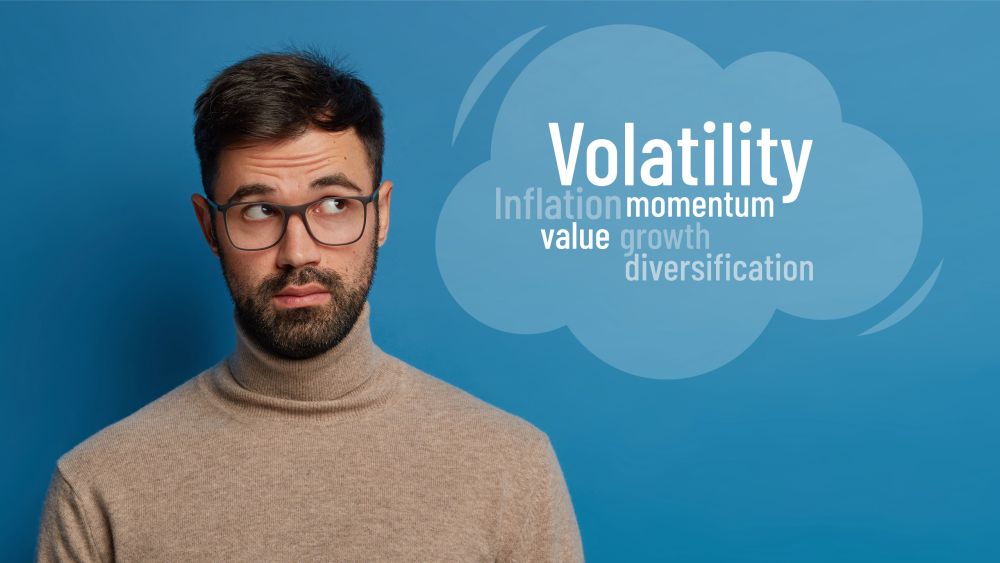Volatility in trading is not the same as variance. Or even risk.
Variance is a statistical term with a mathematically precise definition: the “expectation of the squared deviation of a random variable from its mean” and a measure of how far a set of numbers spreads out from their average value. In English, you might say variance is how “spread out” a set of random numbers is, but even that doesn’t quite get to the idea of volatility. After all, a Thanksgiving dinner could be “spread out” across a table randomly, but it’s still Thanksgiving dinner – you know more or less what to expect.
But volatility is more precise and more general at the same time. It can be as simple as a stock’s standard deviation – more on that below – or a formula worthy of a PhD dissertation. As you might expect, the average trader is working with a definition closer to the former, while advanced traders truly understand volatility – and how to use it to their advantage.
So, to make sure you sound smart at the next hotshot trading conference you attend (or, let’s be honest, the next forum post you comment on) here’s a breakdown of the essential volatility in trading, risk and return measures used by traders. Not only will they help you understand trading and portfolio theory, they’ll make you better at judging any kind of financial analysis you come upon. In Part 2, we’ll dive into the more advanced ratios used to assess risk.
Standard Deviation
A common statistical measure of how spread out a dataset is – quite literally, it’s how much results tend to vary from the average of those results. If you’re looking to understand volatility, this is the best place to start. A lower standard deviation means returns occurred in a narrow range, whereas a greater standard deviation means returns are more likely to be scattered and less consistent. If your goal is avoiding volatility, smaller is better.
Note: Standard deviation is often faulted as a true measure of risk because it does not distinguish between upside and downside risk. Humans don’t respond to positive and negative risks the same way, so we tend to prefer measures that don’t either.
Downside Deviation
Downside deviation also measures how spread out data is, but only includes the negative returns. Downside deviation aims to eliminate positive volatility from the calculation. Many traders are only concerned about volatility in the sense that it means they might lose money, so downside deviation appeals to them, even though it doesn’t say much. Just like standard deviation, a lower number means less volatility, and in pretty much all cases, traders would love to see 0 downside deviation.
Maximum Drawdown
The largest peak-to-valley loss during a given timeframe – often a year, with peaks and valleys based on daily figures – expressed as a negative percentage. It’s used as a measure of downside risk, and should always be considered in context of the security’s annualized rate of return.
For example, let’s say a stock starts the year at $10, goes up to $12, goes down to $8, and ends the year at $11. Its maximum drawdown is (8 – 12)/12 = -33%, with an annualized rate of return of just 10%. That’s really volatile. Ideally, you want your maximum drawdown to be less than your rate of return, or even 0.
Most importantly, volatility of an underlying market should not have any impact on your results or statistics when trading those markets. Successful strategies neutralize volatility through leverage, diversification and a lack of emotion. Volatility happens. It should not have any impact on your trading.
Find out how fractalerts can simplify your trading at our Get Started page.
-

Consistency Isn’t the Goal—It’s the Outcome
-

What 2 Quadrillion Data Points Told Us
-

Math and Physics-Based Trading in Any Market Condition
-

Do not worry about anomalies
-

Consistency should not be the goal. Consistency should be the result.
-

Stop canceling fridays
-

The Elliott Wave Forecast is Subjective, Bias Driven And Backwards looking
-

Finding patterns in market data
-

Taking profits through the trade timeline
-

What is your win ratio and you really want to know?

